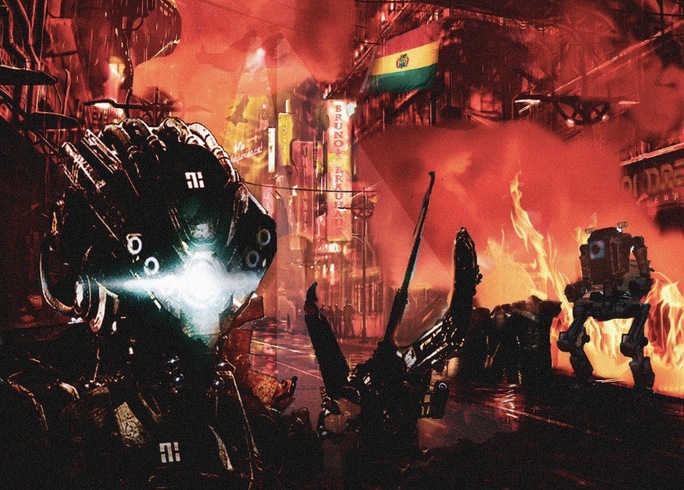Schisms in South America highlight the success and failure of radicalism
It wouldn’t be wrong to say that South America is the testing ground of the world. For its near 500 years of history under European rule, South America has been at the forefront of political, cultural, and economic innovation. While it is true that most of these innovations originated in Europe and the United States, it is in South America where one can see how these innovations and reforms shifted these countries at a smaller scale. A coup in Bolivia, a revolution in Chile, a political shift in Argentina, and a new hope in Brazil; South America has once again become a glance into political revolutions, and those who seek to stop them. While the news cycle is dominated by talks of impeachment and other domestic affairs, it’s important to see what’s happening just south of the United States as it can give a glimpse into the future.
South America’s political nature originates from the close ties it has to the Europen world. Since Spaniard and Portuguese settlers conquered the many tribes in the South and Central American regions, South America has been dominated by Western influence. Over time, the European colonizers would enslave and murder the indigenous people of the America’s creating an extremely classist society in which the indigenous people were almost worthless. The South American continent was a massive boiling pot ready to burst as more and more people were born in the Spaniard and Brazilian Americas. Finally, following the American revolutionary war and the breakout of war in Europe, the Americas were weakened enough for the people within it to declare themselves independent from its European colonizers. What would follow was essentially, a return to normalcy. While the revolutions succeeded in driving out the European invaders, the young nations of the South Americas would soon elect their own authoritarian leaders and a century of violence would begin.
The many nations of South America were now liberated but fractured. Many ethnic groups and political ideologies now soke to carve their own piece of their newly freed continent which began a series of wars within the largest countries to consolidate as much power as possible. South America was now a battleground of ideas and cultures while the common men of these countries saw only poverty and death. The 19th century would be marked as a devastating period for the people of South America. The War of Canudos, the Columbian-Peru war, and the Argentine Civil War ravaged the South American people and economy. This would soon change however, as a new rising wind would finally hit South America from the East. Following the birth of progressivism in Europe and later the Americas, South America would receive a wave of progressive ideas. In the Empire of Brazil, Pedro II became a benign ruler implementing progressive economic policies and investments that made Brazil into an emerging world power. In Argentina, a massive civil war between centralists and federalists finally ended beginning a liberal democracy in Argentina which would eventually lead it to secure the second-highest amount of European migrants, second only to the United States. These periods of progressivism around the world would not last however and soon the Empire of Brazil would fall following a coup d’etat by the military. Argentina would soon follow Brazil and fall to a military coup.
The reason why war broke out so quickly in South America was due to the changing nature of the world. Unlike the American Revolution, revolutions in South America were not condensed to 13 small colonies that shared the same language, culture, and religion. South America’s nations rose to have to battle to appease their nationalist population and push their political ideologies forward. Additionally, South America’s new governments would be highly authoritarian which would lead the rising socialist and communist ideologies in Europe to become extremely popular in Latin America. At the same time, many of these nations engaged in reactionary policies to attempt to control these new parties leading to violent insurrections and coups versus presidents that went too far left or rulers that implemented new reforms.
Following the second world war, many of South America’s countries would once again find themselves in a progressive revolution. In Brazil, the dictator Getulio Vargas was overthrown and succeeded by a new liberal administration of the Republic of Brazil. Argentina saw the rise of Peron who implemented leftist economics to push Argentina out of the economic downturn under President Junto. These progressive blips in South America’s history would not completely involve the United States until the Cold War. Following the beginning of the Cold War, the United States began supporting coup d’etats and installing right-wing totalitarianists across the continent of South America. Brazil’s liberal government was deposed by a US-backed military coup that installed a reactionary government in Brazil. Similar coups would give rise to dictators like Chile’s Pinochet, Paraguay’s Stroessner, and Argentina’s Videla. These military governments would lead their countries into an economic disaster that would plunge South America back to poverty.
This brings us to the modern paths three countries took to change. In Brazil, the economic failures of the military dictatorship led to the return to free elections which would lead to the election of populist-left leader Lula in 2002. Bolivia would also elect a leftist leader in Evo Morales, and Chile would enter a liberal democracy in the new century. These 3 leaders took similar paths in the left but have ended in radically different places in 2019 that tell us about the durability of some of these ideologies.
In Brazil, Lula’s presidency brought Brazil back to the forefront of the world and made it one of the largest economies on Earth. However, Lula’s presidency was held back by endless scandals. The Brazilian Workers Party and Lula had been embroiled in scandal after scandal until finally Lula was arrested and imprisoned for alleged corruption. It would soon be reported, however, that the investigation into Lula was an effort by the opposition party to undermine the Worker’s Party in the following election which in the end succeeded. Lula was imprisoned and Bolsonaro of the opposition party now controls Brazil. Bolsonaro followed the rise of right-wing governments across the world. He quickly took Brazil in a heavily conservative direction and worked to consolidate indigenous land from the indigenous people of Brazil. Bolsonaro attempted to push Brazil far to the right and did his best to stop the Workers Party from ever resurging in Brazil. The Workers Party, however, did not go away. Despite the loss of their leader, the Workers Party continued to organize and now still represents a large portion of the Brazilian people. In 2019, Lula was released from prison following a supreme court ruling he could not be imprisoned until he was found truly guilty once again. Now, as Bolsonaro’s favorability among Brazilians reaches a record low, the national anger is rising in Brazil, an anger that the Workers Party will capitalize on in the following election. Brazil tells the story of the dangers of corruption in government and the necessity to remain transparent to the people. While Lula’s involvement in Brazil’s corrupt practices remains disputed, it remains true that leftists must answer how to avoid corruption. In a time when many leftists argue for the nationalization of energy and transportation, it’s important to consider how to do that without giving too much power to one specific area of government.
In Bolivia, the rise and fall of Evo Morales tell of the success of a leftist presidency and the continuation of reactionary policy in South America. Morales took Bolivia from a barely civilized war-torn nation lacking any access to the ocean, into a steadily developing nation with some of the best growth in South American history. Despite this, he was surprisingly deposed in a 2019 coup d’etat by the Bolivian military. Evo Morales had come under fire in previous years for running for president on a fourth term. Despite being allowed by the Bolivian supreme court, huge opposition still arose due to the implications it could have on Bolivia’s democratic process. Despite this, Evo Morales won the election by getting a well enough majority to avoid a run-off vote. A new scandal would soon arise though claiming Evo had rigged the elections in his favor which would be the pretext used during the coup. The OAS, which found the potential corruption, only suspected the election for fraudulent activity because of the fact that Bolivia has two different systems of reporting the vote. The fast vote method works essentially like exit-polls where a quick count is done to try to get speedy results to news outlets. The real vote is the raw count which takes a long time to actually get down. Just like exit-polls in the United States, the fast vote reporting system favored urban areas which often sided enough with the opposition to give the opposing party enough support to bring the vote to a runoff election. The raw score soon found that Evo’s party had gained the majority necessary to win without a runoff and he was declared the winner. The inconsistencies within the two reporting methods, however, led the OAS to call for re-election which curiously Evo agreed to but the opposition leaders did not. Bolivia’s coup brought into power a party that failed to even reach enough votes for a runoff election and that didn’t even control a third of congress by the time it took power. The acting president of Bolivia walked into the presidential palace holding a massive Bible declaring Bolivia a land of God once again. The Trump administration has expressed support for the new regime in Bolivia and US stock prices for Tesla, and other companies that use lithium, a prime good in Bolivia, has gone up.The situation in Bolivia is a reminder that the legacy of American imperialism in South America continues to dominate its regional politics.
The final nation to look at is Chile. For decades, Chile has been in a neoliberal status quo that has brought minimal change to its institutions. Following the Pinochet dictatorship’s anti-leftist policies the Chilean political sphere shifted right with many prominent leftists fleeing the country. Once Pinochet was deposed and a democratic government was established, the neo-liberal era of Chile began. The government has been running on platforms very similar to the United States’ 90s era liberal programs. Unfortunately for Chile, these platforms have done almost nothing to bring them out of poverty. This has led to massive protests across the country causing the national government to prepare for the worst as more and more Chileans march for change. Chile warns of political centrism over long periods of time. In a country with flaws, the status quo cannot last forever, and the people of Chile are clearly showing that.
Political radicalism is almost synonymous with South America. The different far-right and far-left governments that have risen, both successful and unsuccessful, have marked the South American government for years to come. By taking notes from the successive administrations and their flaws a framework for a successful state can be found from the nations of South America.

Marco Rivero is a senior at Metea Valley and is spotlight Editor for the Stampede. When he's not listening to music, Marco enjoys keeping up with politics...

Harrison Linden is a senior in his first year of journalism as a graphics designer. He spends way too much time on activities like drawing, painting, photography,...



Nein • Apr 24, 2023 at 5:19 pm
Argentina is the best country in SA
Proud Citizen of the United Nations • Nov 19, 2019 at 11:04 am
Thank you Metea Media for covering this. I appreciate Metea Media covering issues across the globe and I’d highly encourage you guys to write more stories about international events and issues since we are constantly being bombarded about only domestic issues here in the U.S.A.
Mr. Flow • Nov 18, 2019 at 8:19 am
Thank you so much for this